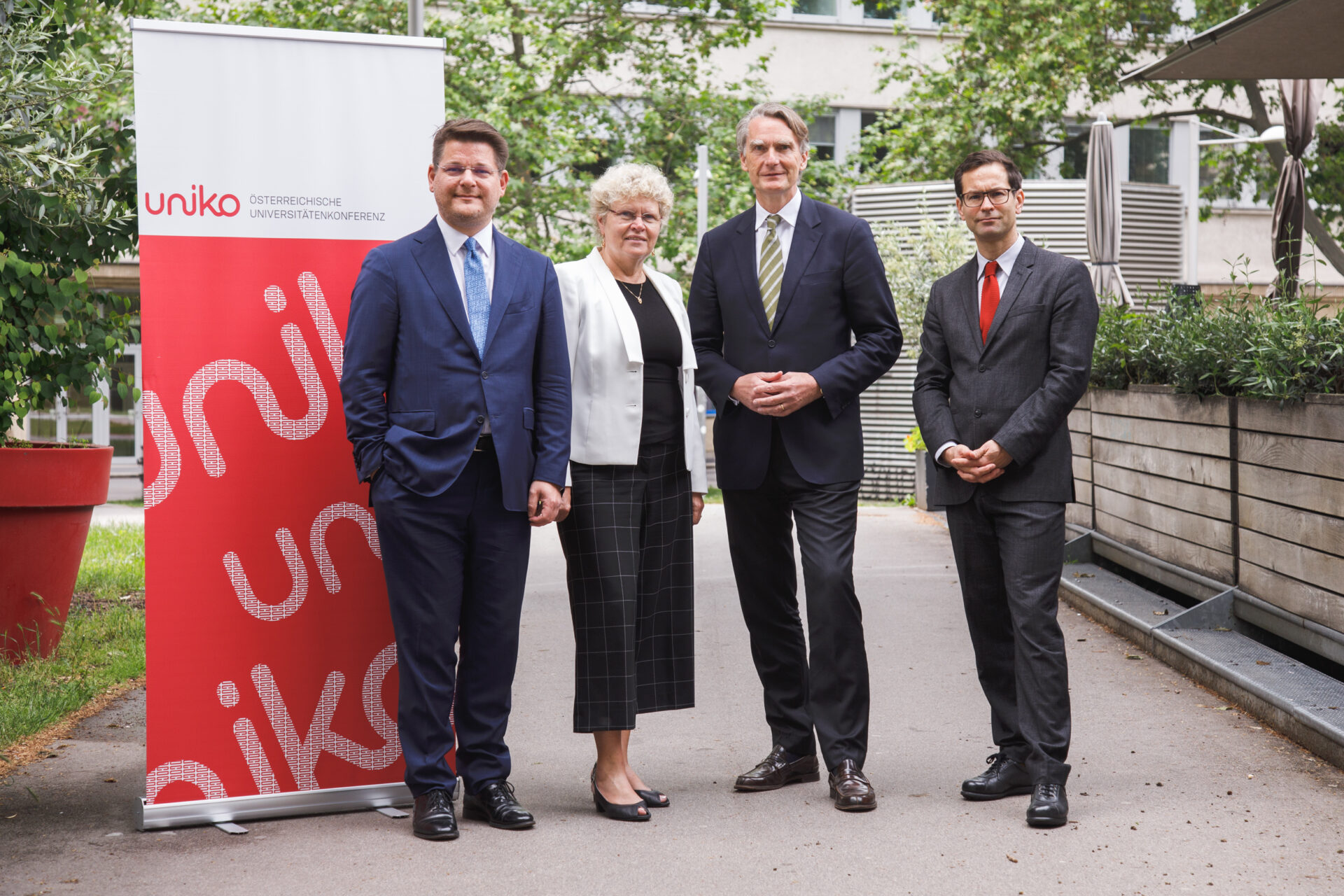
University Funding and Expenditure in International Comparison
WIFO economist Jürgen Janger presented the study results on 7 June 2023 at a press conference with uniko President and Rector of the Vienna University of Technology Sabine Seidler and Rectors Sebastian Schütze (University of Vienna) and Oliver Vitouch (University of Klagenfurt).
Based on the new microdata of the European Tertiary Education Register (ETER), it is possible for the first time to systematically compare the funding and expenditure of individual universities in Europe. Adjusted for differences in size and price levels, Austrian universities are on average in the midfield of strong and leading innovation countries in Europe. At the level of individual universities, however, the differences are much higher.
The University of Vienna and TU Vienna analysed in detail show a large gap to leading European top universities in Switzerland, the UK, the Netherlands and Denmark. For example, the technical universities ETH Zurich and Imperial College London spend three times more per student than Vienna University of Technology. The University of Zurich spends more than twice as much, the University of Oxford six times as much as the University of Vienna. Compared to universities from Finland and Germany, the differences are smaller, but still pronounced. The differences at technical universities are higher than at comprehensive universities. To make the University of Vienna comparable, it was statistically merged with the Medical University of Vienna and the University of Veterinary Medicine Vienna.
The different expenditure per student has an impact on research quality and supervision ratios. Measured by the proportion of highly cited journal articles in the CWTS Leiden Ranking, the TU Vienna is in last place among the universities compared in detail, and the University of Vienna (merged with the Universities of Medicine and Veterinary Medicine Vienna) is in last place in terms of supervision ratios: in Oxford, one full-time equivalent of academic staff roughly supervises 4 students, in Zurich 10 students, in Vienna 20 students.
While performance improvements are possible through structural reforms – for example with regard to study regulations – the data indicate that top performance in research on a broad institutional level cannot be achieved without significant increases in expenditures per student. In its RTI Strategy 2030, Austrian RTI policy has set itself the goal of catching up with the top international field and strengthening Austria as an RTI location. In view of the new evidence, these goals cannot be achieved without significant increases in funding or new allocation mechanisms for university funding.
Publications
Please contact


















